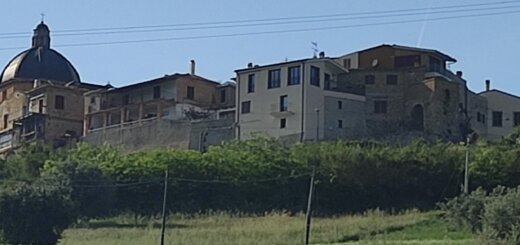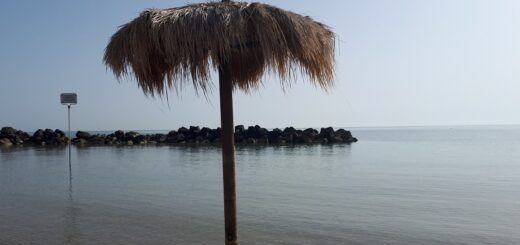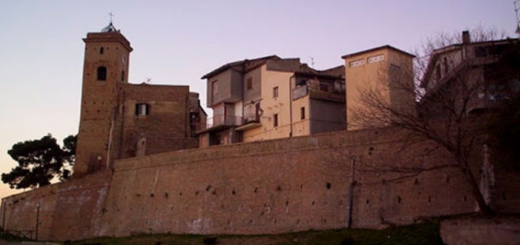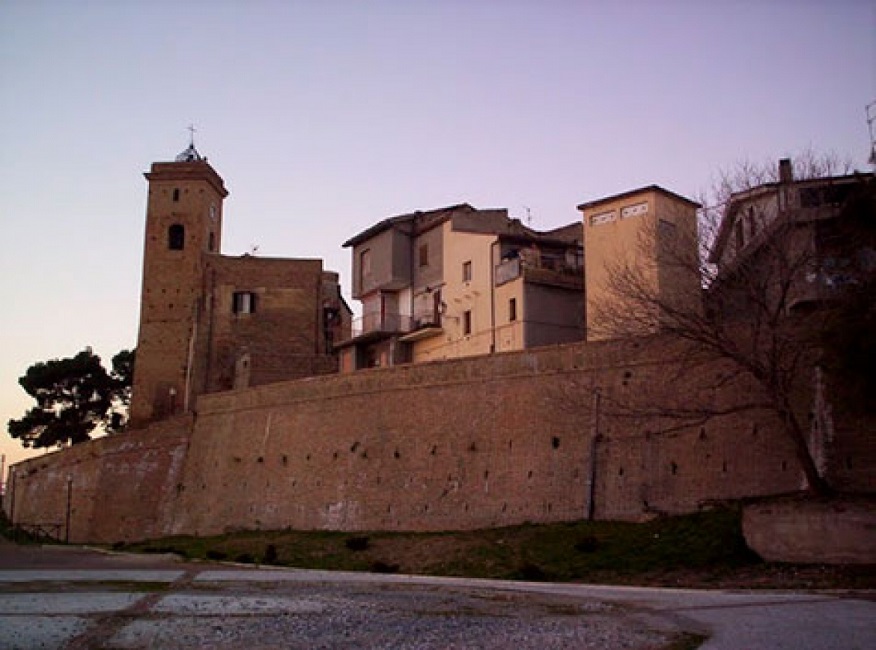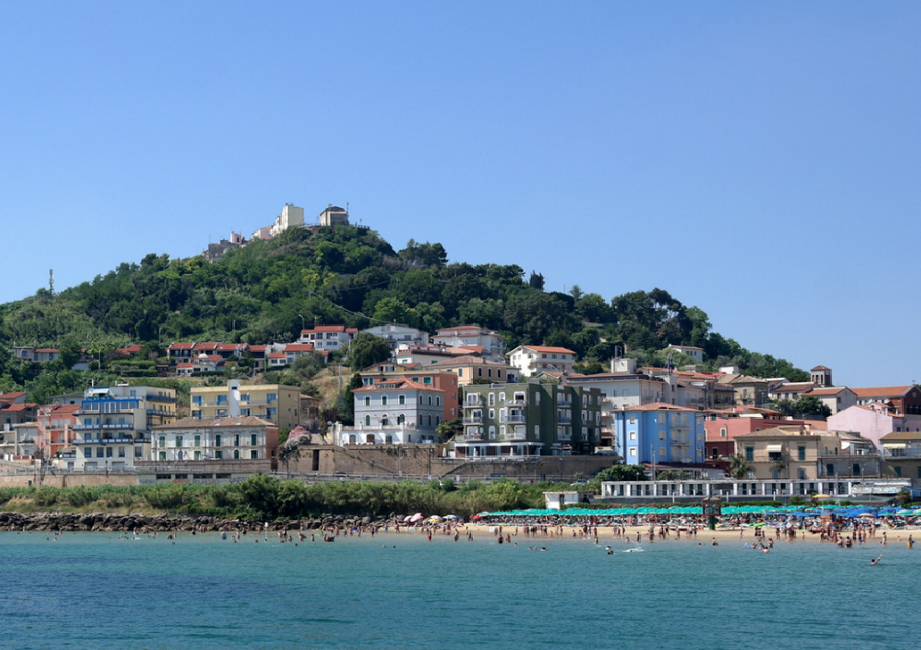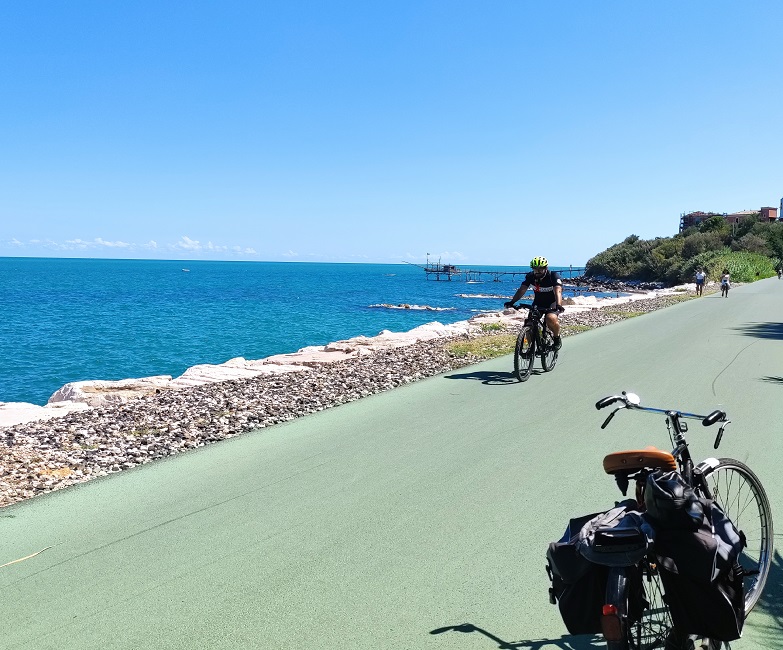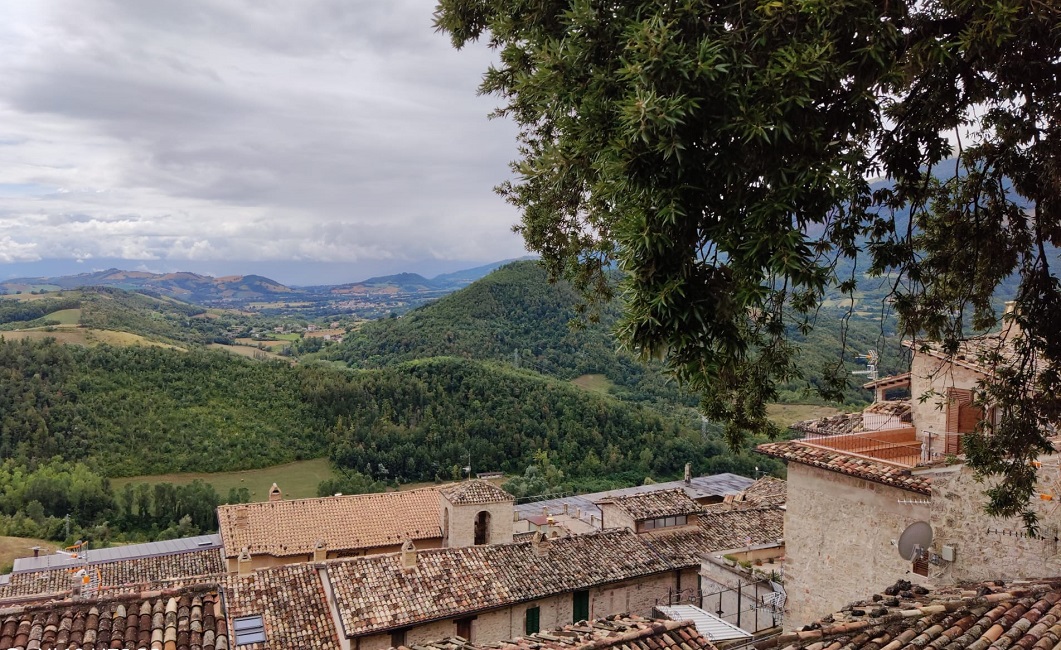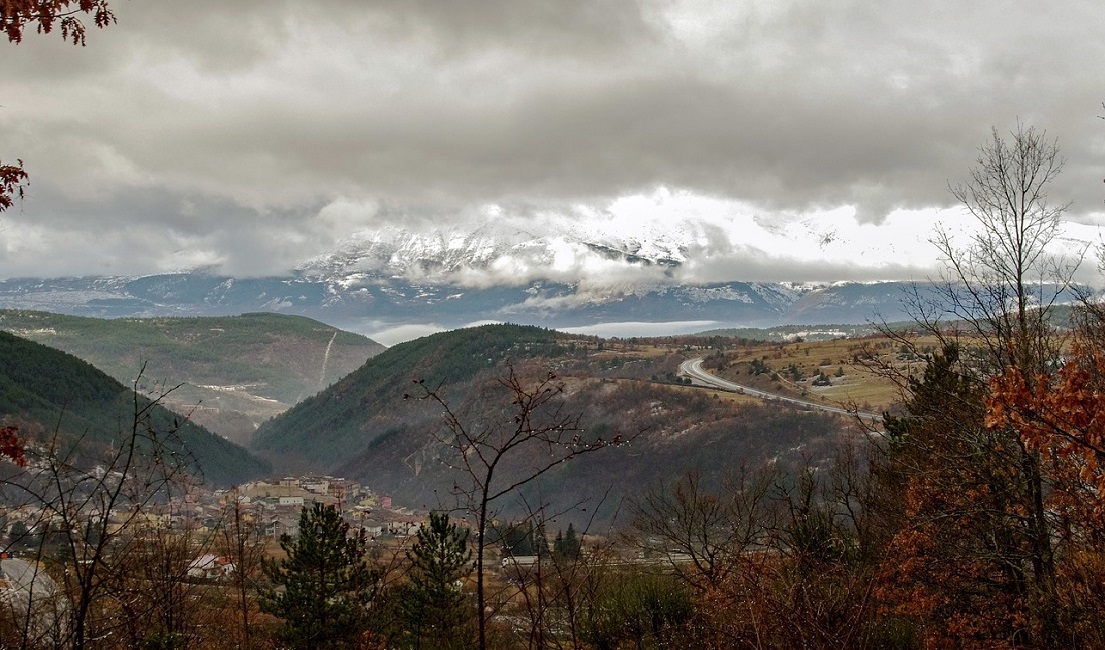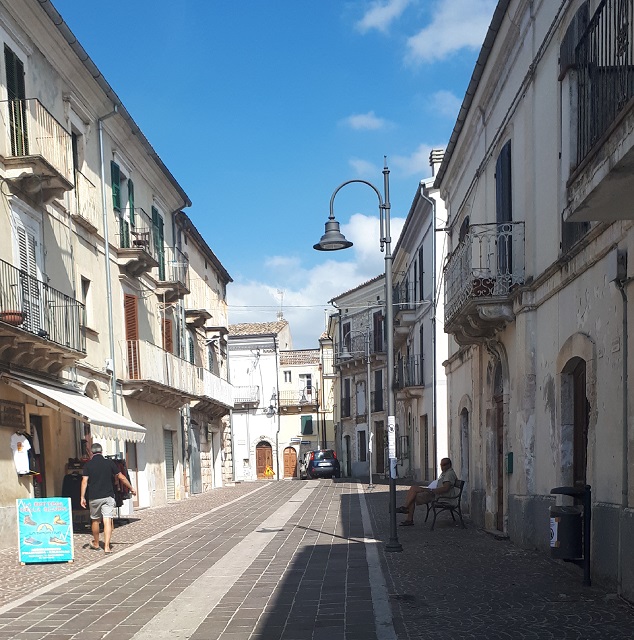Ortona
Gateway to the Trabocchi Coast
It’s a fickle kind of day and as I roam the grounds of the Castello Aragonese in Ortona the sun skulks behind fat clouds. Far below, the changing colours of the Adriatic reflect the moodiness of the sky.
Castello Aragonese
Like Vasto, Ortona is built on a clifftop and the Castle commands magnificent views up and down the coast. Built on a previous structure in the fifteenth century by the Aragonese, the latest in a long succession of invaders, it eventually became a noble residence, only to be destroyed during World War II.
Entrance costs nothing and roaming the grounds high above the sea feels liberating.

Castle is a bit of a misnomer because what looks like a robust fortification from a distance is really only an empty shell. The remains include parts of the façade with its cylindrical towers, a few photo-worthy arches, a couple of underground passages which are not in the least bit spooky, and stretches of outer wall enclosing a vast empty area of scrubby land. The noble residence within is gone.

The remaining walls look sturdy enough to withstand a thousand winters. And surely, were it not for the winter of ’43, they would still be intact. But today their jagged outlines testify to the violence of the German bombs that blew the castle apart.

It puzzles me that this town, with its peacetime population of 10,000 souls, was so fiercely fought over during the Second World War. Granted, being the only deep water port on the east coast of Italy, it was a vital arrival point for ammunition both for the allies and the retreating Germans. But it was not just the port that was targeted. In the end the whole town was destroyed, more than one tenth of the population killed, and the castle blown up.
The Italian Stalingrad
Ortona under siege came to be known as the Italian Stalingrad. The fighting was brutal and the technique of mouse-holing – throwing grenades through walls to gain access to buildings – reduced hundreds of homes to rubble.
During that dreadful week in December 1943 the weather was dire, and soldiers from both sides – the Germans and the 1st Canadian Infrantry Division, many of whom are buried nearby in the Canadian War Cemetery – had to wade through debris and muck. The Battle of Ortona fully epitomized the misery of war.
St. Thomas
And yet, through it all, St. Thomas slept.
Yes, that St Thomas. Thomas the twin, Jesus’s friend and apostle, the patron saint of doubters and sceptics, is here in this very town, laid to rest in a casket in the cathedral, the Basilica of San Tommaso Apostolo. Built on the site of a Roman temple, the Basilica has suffered extensive damage over the centuries, and was left barely standing after the Battle of Ortona. It’s a miracle that St. Thomas is still there.

But how did he end up in Ortona in the first place? Stolen, it turns out. From India, where the saint is believed to have died a martyr, his body was taken to Edessa and later to the island of Chios. And it was from here that it was spirited away in 1258 by warships from Ortona.
Many people relate to Doubting Thomas because they ascribe to him a diffident, fragile nature in need of reassurance, with which they identify. For me, though, he was just the opposite. St. Thomas was no pushover. He wasn’t willing to go along with gossip and hearsay: he had a mind of his own. If he were alive now I expect he’d be a judge, pouring over the evidence before reaching his verdict.
If he were here now he’d be sharing my anxiety as I sit in his special chapel under the altar, gazing at his casket and wondering if the bones are really his.

There is plenty of literature in the chapel and I consider the scientific evidence. An examination in 1984 revealed that the remains were of a male between 50 and 70 years old. But to me the most convincing proof is the headstone, stolen along with the saint’s remains and also preserved here in the chapel, showing a male figure with a halo in bas-relief, and the saint’s name in Greek.
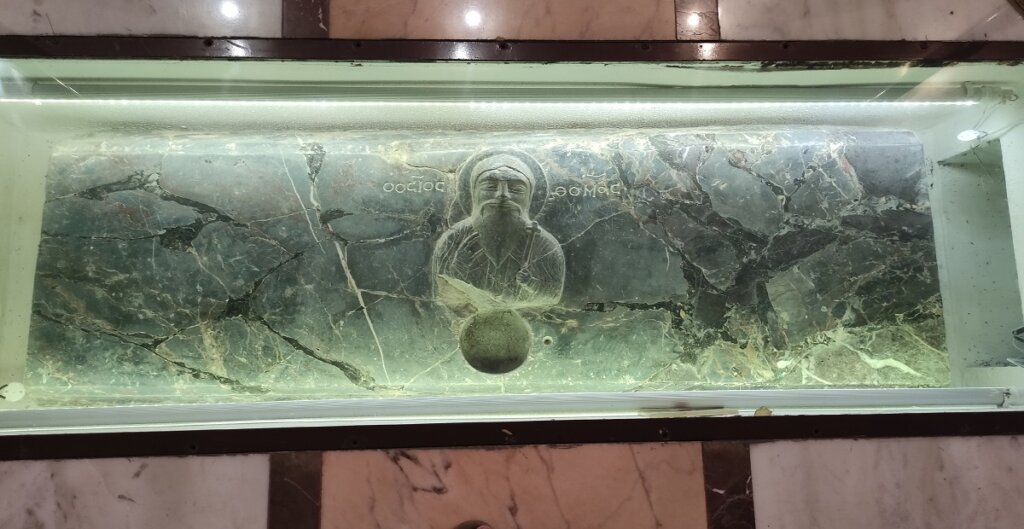
After wrestling with my doubts for some time I climb the stairs back into the main body of the cathedral.
Francesco PaoloTosti
If you’d been in the Basilica one May morning in 1858 you might have been entranced by the angelic singing voice of a 12 year-old boy in short pants. This was Francesco Paolo Tosti, who was born in Ortona and grew up to be an accomplished tenor and composer, as well as a distinguished music teacher in the court of Queen Victoria.
Nowadays Tosti is mostly known as the composer of popular Neapolitan songs, which have been revived by the likes of Andrea Boccelli. He was a close friend of his fellow Abruzzese, Gabriele D’Annunzio, whose verses he set to music.
A Florence connection
As I leave the church the sun comes out and I continue my tour. Perhaps because the urban centre is on a clifftop, Ortona has none of the characteristic bustle of a port. Instead it gives the impression of a peaceful country town. The inner streets have an old, rather shabby appearance in contrast with the sprucer apartment buildings lining the cliff, but I spot some interesting stonework on otherwise nondescript buildings.


During my wanderings I am thrilled to find a connection to Florence. A plaque announces that here in a house that was destroyed during the Battle of Ortona, the Duchess of Florence Margarita d’Austria, (or Margaret of Parma as she’s also known), spent her final years.
The illegitimate daughter of Charles V, the Holy Roman Emperor, Margarita strikes me as a fascinating character. Twice married, she wore black to her second wedding to express her dissent. She was a fearless rebel and a skilled and respected administrator. The house in Ortona was where she intended to spend the winter months, but she died before it was finished.
Tosti’s theatre and memorial
My walk takes me through narrow streets and back towards the cliff and it is here that I find Tosti’s memorial. It is in the form of a statue of the musician himself, staring across the square at the town theatre, in liberty style, named after him.

He is surrounded by women – the peasant women of Abruzzo whom he considered his muses. They look as if they’re singing their hearts out.

Passeggiata Orientale and the Port

I am now near where I started, where the town opens up in a south-east-facing promenade, the Passeggiata Orientale, that skirts the clifftop like a gallery and runs as far as the Castello. From here I have a clear view of the port below, with its five piers spread out in the ample bay.

It was to the port of Ortona that the bones of St. Thomas were brought and it was from the same port that the last monarch fled Italy in 1943. abandoning the country to its German invaders and the city to its terrible fate. If you wander down to the port today you can see a plaque condemning the king’s flight, for which ‘Republican Ortona cries out from its rubble and its wounds for the monarchy’s eternal damnation’. Harsh words indeed.
Those dark times are long gone. Nowadays Ortona’s main claim to fame is as a gateway to the celebrated Costa dei Trabocchi. Not far from the port are bike hire shops for the unequipped, for this is where most cyclists begin their tour of the coast.
From the castle grounds I had spotted the long green ribbon of the Adriatic Cycle Route winding its way north. Now instead I can see where it curves southward, disappearing through a disused railway tunnel. This is where, not so long ago, we too set off for the Trabocchi Coast on our cycling adventure.
But that’s another story.


